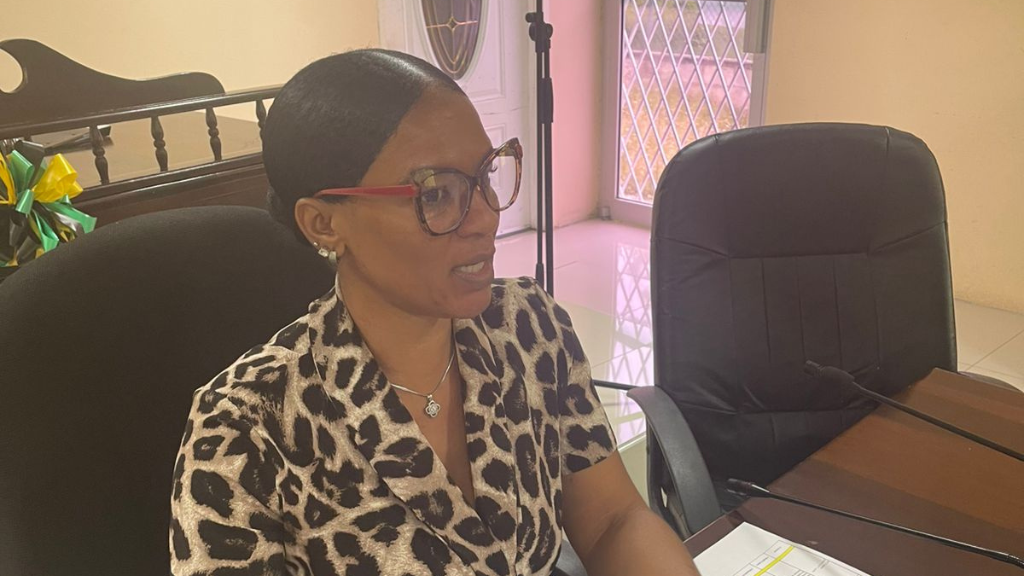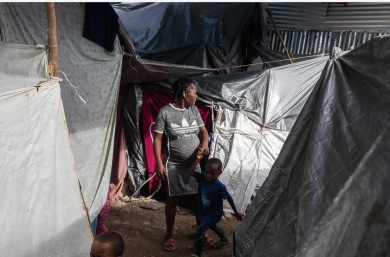Minister of Local Government and Rural Development Desmond McKenzie speaking at the National Disaster Risk Management Council Meeting on Wednesday (Screen grab: JIS)
KINGSTON, Jamaica — Minister of Local Government and Rural Development Desmond McKenzie is giving the assurance that the Office of Disaster Preparedness and Emergency Management (ODPEM) is fully equipped to respond should a hurricane hit the island, and is urging Jamaicans not to ignore hurricane advisories.
“I want to give the country the assurance that the Office of Disaster Preparedness and Emergency Management is fully equipped financially and otherwise as we go into what is anticipated to be an active hurricane season. I want to use the opportunity this morning, as I did last Wednesday in Parliament, to urge Jamaicans not to turn their backs on the various advice that will come,” McKenzie said.
He was speaking at the National Disaster Risk Management Council Meeting on Wednesday.
“We saw the effects of Beryl last year, and it was because we were proactive last year that we were able to come back in a way that a lot of people didn’t expect us to. It was because of that collective response from all of us as Jamaicans,” he continued.
The local government minister further shared that some 900 shelters across the island have already been inspected.
“As we prepare for this hurricane season, over some 900 shelters have been inspected and are ready. The Ministry of Labour has enough supplies, and following this portion of the meeting, we will meet in the business session of the council to go into details,” he shared.
Additionally, Finance Minister Fayval Williams has also given the assurance that the country has the financial resources to respond to natural disasters, amounting to some $130.6 billion.
“In the face of what we know to be increased intensity of weather-related events, we would have been in a very bad place when Beryl struck if we had not implemented our National Natural Disaster Risk Financing Policy (NNDRFP)…It has many layers of what we call shock absorbers for the economy. Since then, we have increased our disaster coverage to ensure we have the financial flexibility to meet natural disasters,” she said, adding that the NNDRFP allows the government to prepare financially for natural disasters.
The NNDRFP currently offers $130.6 billion in coverage, which, according to Williams, can be accessed based on the severity of the disaster.
“Our disaster financing policy takes into consideration those events that are high frequency but low severity, such as floods, and these can be dealt with through budget reallocation or reserve and contingency funds to provide resources for relief efforts.
“For the higher severity, low frequency events such as hurricanes, we have to use insurance instruments such as the facility that we have with CRRF (Caribbean Resilient Recovery Facility), our Caribbean partner, and it says, in times of disaster, or policy that is, start with what we can reallocate, what we can defer, what we can delay or cancel. And if that is not enough, go to the next layer, the Contingency Fund and the National Disaster Fund. This is $4.8 billion. Then you go to the National Natural Disaster Reserve Fund, that has $1 billion. Together, these two funds total $5.8 billion and are Jamaica’s own resources,” she said.
Additionally, she noted that there is another $6.5 billion accessible through two contingent credit arrangements with the country’s international partners for disaster coverage.
“I’m pleased to note that on Tuesday, March 4th, 2025, an additional facility was added for an amount of $6.5 billion to bring the disaster coverage for Jamaica, again, just to reiterate that number, to $130.6 billion. Of course, how much we can access will depend on the severity of the disaster,” Williams added.
— Vanassa McKenzie










